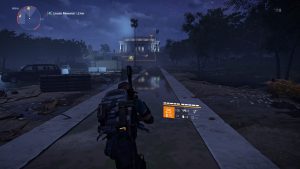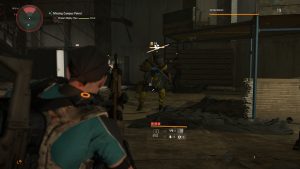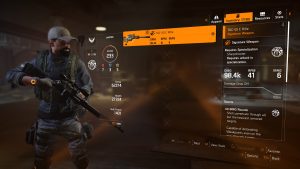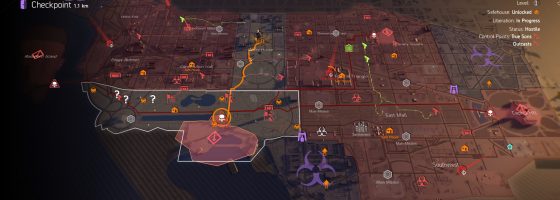Tom Clancy’s The Division was Ubisoft’s way of giving us a more somber take on Borderlands’ Role-Playing Shooter design. Issues related to content and balance at launch almost made this game dead on arrival, but like For Honor and Rainbow Six Siege, the developers bounced back with post release support; so much so, that it earned them a sequel.
With lessons learned and looter shooter fans ready, does the Division deliver the goods?
Mr. Shooter Goes to Washington:
The story continues after some time has passed from the events of the first game. A biological attack was carried out around the world causing the end of life as we know it. The only people capable of protecting the innocent were sleeper agents by the government called “The Division.” At the end of the last game, you brought peace to New York after wiping out the factions that turned it into a war zone.
Unfortunately, a new threat has appeared, and your only option is to head to Washington to figure out what’s going on and keep the Division alive.
From an aesthetics point of view, the game continues having some amazing environments modeled after the actual Washington D.C. As before, you’ll get to visit monuments and major areas from the actual city.
Before we talk about what’s new, let’s quickly go over the basics for those that missed the first game.
Cover RPG
The Division and Division 2 combine cover-based shooting of third-person shooters with RPG progression and growth. The game features a small set of gear types that can drop but features a loot table for every level until you hit the cap (but more on that later).
Gear belongs to various manufacturers and there is a set bonus for wearing multiple pieces. The gun types are limited to shotguns, SMGs, rifles, assault rifles, snipers, and pistols, with each type having a unique bonus.
Combat is all about finding safe positions to attack the enemies while staying in cover. Everyone takes increased damage when they are out of position or being flanked, and you can quickly go down if caught unaware.
As before, your trump cards are next-generation tech that you can field any combination of two at one time. New this time is the option to further spec by choosing variations of each piece of tech and finding mods to further enhance them.
The Division 2 features the same online play as the first — with up to four players able to team up in the world, and the open PVP landscape of the dark zone.
Going Dark (Again)
The Dark Zone is the Division’s unique multiplayer mode. Each Dark Zone is an open area where you’ll fight the hardest enemies and can find the highest quality loot. The catch is that players can “go rogue” and start targeting other players to steal their loot. The best loot must be shipped out via copter before you earn it.
This requires you to hold out against enemies and other players before you can secure it a safe passage.
As before, this mode is a good idea, but still feels too separate from the main game. You have a separate “dark zone level” from your actual level: so, any progress in the DZ doesn’t help you to unlock new missions. Depending on what time you play, you can either be swimming in other players, or just wandering around another empty map.
I only experienced a little of the Dark Zone and can’t comment on whether the hacking problems from the original have been fixed.
From 1 to 30
As with the first game, the Division 2’s gameplay can be split between levels 1-30, and then the “end-game.” The basic path through will have you completing story and side missions as you unlock new gear and upgrades to settlements, while taking on the three evil factions. The story plays out more in the background this time around.
Each faction has different enemy types and takes on “elites” who come with specialized attacks. You’ll have to clear them all out before you can take on the final mission and make it to the end game.
The various missions are okay, but they all follow the same formula of “walk into a big room, fight several waves of enemies, move on to the next big room.” If you can get friends together, the game is better to play with a full group.
Once you’ve cleared the final mission, you’ll enter the end-game content and the real grinding begins.
Gear Rating Returns
At level 30 The Division 2 enters its end game grind. All gear now has a respective “gear rating” attached to them, which is just a fancier way of having endless loot tables. The game adds in a new fourth faction that features new enemy types; alongside increasing the power of the other three.
This is where the returning “world tier” system from the first division appears. As you go up in gear rating, you’ll eventually hit the limit for the tier you’re in. At that point, you can go up to a higher tier — resetting all the quests, raising enemy stats, and giving you a higher loot table to get loot from.
From a gameplay point of view, the biggest change at level 30 is the “specialization” system. You can choose from — at the moment — three different specializations complete with their own skill tree and limited use weapon.
The specialization system was designed to provide more progression following the level cap, and there have been talks about having more specialization become available through DLC and post-release support. The idea is certainly there, but The Division 2 continues to have the same problem as the first one — getting me to care about the grinding.
Gear Grinding:
The Division 2 can’t escape this feeling of repetitiveness throughout the game’s design. The world, while detailed, doesn’t have as much in terms of content. Each mission follows the same structure that we mentioned already, the only difference is what enemy types you fight.
The abstraction makes a return as you fight people who can take multiple bullets to the head and shrug them off. While the passive modifiers for all the gun types do help a little bit, it can’t get rid of for me how boring the game gets.
Using an assault rifle at level 5 is the same as one at level 30 or whatever your gear rating is. The game lacks that ARPG pull of feeling like you’re getting stronger over play. Once you’ve settled on your skills and specialization, there are no further elements of meaningful growth.
This problem also extends into the dark zone and keeping people coming back. The rarest weapons in the game are considered “exotic” class and only drop from specific fights. Unfortunately, even if you do get one, that weapon may not be useful when you move to a higher world tier; forcing you to grind some more. I’m just not seeing the incentive to keep playing the game via the loot hunt.
Raising the Flag
The Division 2 is not a bad game and does improve on the core concepts of the first one. However, the developers are still struggling to balance PVP, PVE, and progression all at the same time. They need to do one or both of the following I feel — Greatly improve the tactical gameplay and gunplay to make the encounters far more interesting or go all-in with the gear differentiations and modifiers to allow complete customization of weapons.
It will be interesting to see how The Division series continues from this point on, both with post-release support and if we see a third game. For me, I already saved Washington DC once, I don’t want to grind to do it five more times.






